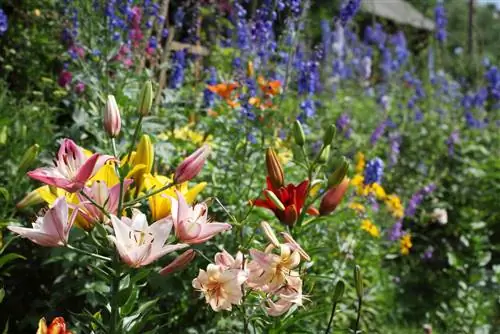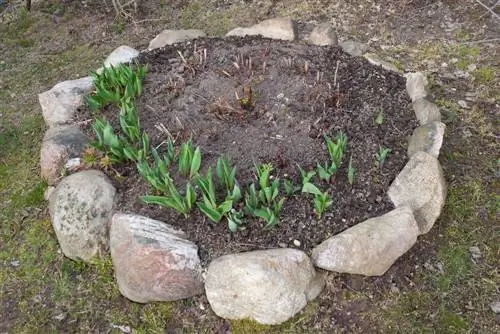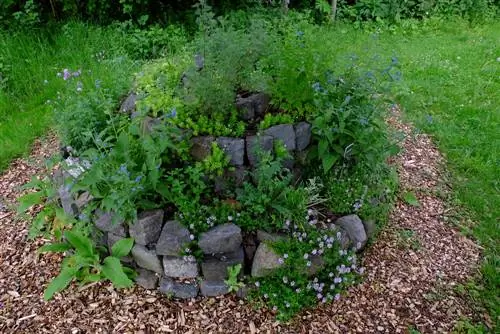- Author admin [email protected].
- Public 2023-12-16 16:46.
- Last modified 2025-01-23 11:21.
Perennial beds are already very easy to care for, as the hardy perennials sprout every year, so hardly anything needs to be planted in spring. However, there are also differences among the perennials. We introduce you to the easiest-care perennials for your perennial bed.

How do you design an easy-care perennial bed and which perennials are best suited for it?
To make a perennial bed easy to care for, you should use automatic irrigation systems, leave enough space for plants, cover the soil with mulch, choose perennials that are appropriate for the location, and use compost when planting. Perennials that are particularly easy to care for are drought-resistant, robust wild perennials and winter-hardy varieties.
How to make your perennial bed easy to care for
To make a perennial bed easy to care for, it's not just about choosing the perennials. When you start investing, you should have practicality in mind. You should consider, among other things:
- Set up an automatic irrigation system to save yourself the hassle of watering
- Don't plant too densely so that your plants can spread out without having to cut them back.
- Cover the soil with mulch to prevent moisture loss and weed growth
- Be sure to pay attention to the location requirements of your perennials. They only thrive well and he althily in the right location.
- When planting, mix compost (€12.00 on Amazon) into the soil to provide the perennials with nutrients for the rest of the year. Only heavy feeders need additional fertilization in summer.
Easy-care perennials for the perennial bed
What makes an easy-care perennial? There are different aspects of a perennial that can make or save you work:
- The water requirement: Drought-resistant perennials can sometimes get along without water.
- hardiness: It is recommended to cover the perennials with brushwood in winter to protect the roots. However, you can save yourself this if you plant extremely hardy perennials.
- the robustness: Robust perennials are less likely to get sick or attacked by pests and therefore require less work. The most robust are native wild perennials.
Unfortunately, a combination of these three factors is rather rare. Although wild perennials are often very hardy, they are rarely drought-resistant. Therefore, choose for yourself which factor is most important to you.
Perennials that can handle drought
- Affodil
- Branchless Grass Lily
- Branky grass lily
- Bluestarbush
- Chinese leadwort
- Three-flowered carnation root
- Scented Nettle
- Dyer husk
- Common Adderhead
- Goldhair Aster
- Junker lily
- cockade flower
- Magnificent candle
- Prairie Candle
- Roman wormwood
- Sage
- Sand Carnation
- Yarrow
- Spurflower
- Steppe Spurge
- Shrub Strawflower
- Carpet Bellflower
- Wildaster
- Widow Flower
- Dwarf Elecampane
Robust wild perennials
- Columbine
- Wild garlic
- Mugwort
- Mountain Knapweed
- Blue Mountain Monkshood
- wood anemones
- Dark Columbine
- Fern varieties (native)
- Camomile
- Lady's Mantle Types
- Goldhair Aster
- Large Star Umbel
- Native hazelroot
- Crawling Gunsel
- Lily of the valley
- Yarrow
- Forest Goatbeard
- Forest Bluebell
Hardy perennials
Most perennials are well hardy. However, there are particularly winter-hardy varieties or breeds. When purchasing, pay attention to the relevant information on the label.






